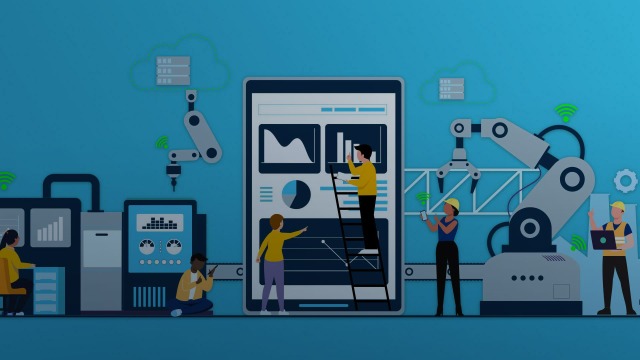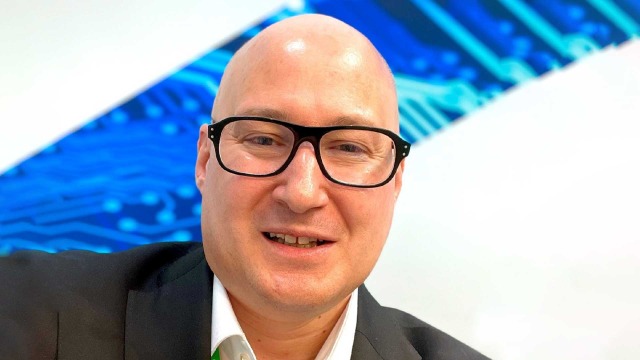

Select your location
Bosch Rexroth around the world
Asia & Pacific
Europe


Industry is constantly evolving. Where are we then in the expansion and use of wireless real-time networks for industry? With 5G campus networks on the rise and 6G in early development, it can be difficult to anticipate where the focus will lie in future. The 5G ecosystem may be growing at a rapid pace, but should users be waiting for 6G in order to implement a newer system into their daily operations? We spoke to three experts on industrial wireless real-time networks to find out what they think.
Since the availability of 3GPP release 16 in the middle of 2020, the fifth-generation mobile communications standard (5G) ecosystem has been continually growing. On the consumer side, 5G is no longer a big deal in many countries. There are many 5G-enabled devices coming to market. However, on the industry side, while there are some industrial 5G devices that are already available, there are mostly trials and pilots. Some companies are now building initial 5G campus networks for their factories and other venues, as well as starting to define a global deployment roadmap.
The power of 5G is that it enables thousands of devices to exchange data wirelessly in real-time with high quality of service. This means more than simply saving on cables. It means machines, robots and assembly stations can be freely placed around the shop floor, enabling users to flexibly reconfigure lines again and again. Even better, the real-time availability of so much data enables new continuous services and the relocation of control functions to the factory’s edge servers.
This year, the European Union launched the second phase of its 6G research and innovation program. Which leaves us with a choice: is it worth investing time and energy into 5G now, or should users wait for the launch of 6G?
Andreas Müller is the Project Director for 6G at Bosch and General Chair of the 5G Alliance for Connected Industries and Automation (5G-ACIA). He has been active in the development of 5G technology from the very beginning. “5G has a clear industry focus. It supports many exciting new features that provide a lot of value to the manufacturing sector, such as support for time-sensitive networking, high accuracy positioning and ultra-high reliability,” Andreas explains.
At Bosch Rexroth, we’re already working on 5G-enabled solutions, such as the automation platform ctrlX AUTOMATION, the autonomous mobile robot ACTIVE Shuttle, and NEXO screwdriving technology.
“In the Bosch Group alone, we’ve set up about fifteen test beds and proofs of concept (PoC) already and gained a lot of experience with 5G from this,” says Andreas. These PoCs cover a wide variety of manufacturing concepts: from the large-scale production of small parts for the automotive sector, to semiconductor manufacturing and the assembly of household appliances.
One very promising use case is intralogistics. “It gets really interesting when we move the ‘intelligence’ of an autonomous mobile robot like the ACTIVE Shuttle, such as important control functions, to a local edge cloud and close the control loop between machine and IT infrastructure via 5G. Such an approach enables cheaper end devices and improves maintainability, security and scalability. At the same time, we can implement new functionalities fairly easily, such as cooperative maneuvers between different transport systems. We’re currently working on such approaches, which are only made possible by 5G.”
Andreas Müller
Project Director for 6G at Bosch, and General Chair of 5G-ACIA

Andreas Müller
Monika Gupta is the Group 5G & Edge Lead for Industries and Alliances at Capgemini, who support users with transformation consulting, as well as the development, implementation, and operation of production-critical systems. She believes now is the right time to get real-world experience with 5G and gain a competitive edge as an early adopter.
“During the last few years, there’s been a clear script for the implementation of 5G – and it’s similar to any other major tech disruption in the industry. First, companies test out what they can achieve in pilot projects. They identify which applications will help them obtain higher quality, lower costs or greater flexibility. Then they apply the Pareto principle and harvest the low-hanging fruit first. Finally, they introduce the appropriate processes into production, roll them out and prepare for scale. In addition to this, industry’s adoption of 5G will also help with the real-world learnings and its evolution to 6G and beyond.”
Capgemini has a very good global view of 5G. “China has the highest 5G adoption in industries globally to date. Currently, in Europe and North America we see commercial industrial 5G adoption picking up, and in the Asia Pacific region, we see a lot of companies and governments evaluating the potential of 5G and planning for adoption,” Monika says, describing the trend.
Monika Gupta
Group 5G & Edge Lead for Industries and Alliances at Capgemini

Monika Gupta
Fabian Schlage, Head of Ecosystem Engagement at Nokia, agrees that now is the best time to implement industrial uses that would require industrial-grade private wireless based on 5G standalone. “There are already more than 1000+ private campus networks worldwide running with Nokia technology,” he explains. “We’ve integrated all the functions for a 5G network in a platform like a plug and play box, making it easy for users and very convenient for the IT or partner operating the network. Actually, customers don't need any expertise in mobile cellular technology.” Crucial to the successful use case implementation is powerful reliable edge computing deployed on the premises. For campus networks, Nokia provides the Nokia Mission Critical Industrial Edge (MXIE), which grants perfect connectivity and also further applications, such as tracking and positioning, extended reality and much more.
“Our Nokia campus networks are an ecosystem-neutral platform that allows the enablement of features and applications from a shop catalog. All software, including the core features, have to undergo strict security and performance tests before they are injected into our mission-critical edge,” states Fabian. “With a campus network, the user has everything under control and can implement quality monitoring or predictive maintenance in their encapsulated edge environment,” adds Fabian. “The blueprinted applications that are running on top of the mission-critical edge also benefit immediately from 5G. For example, third party apps enable the mobile workforce with instructions for maintenance, repair and overhaul.”
“Or think about real industry 4.0 use cases, based on rich and bandwidth consuming data. With Smart Mobile Lab's EVO application MXIE has edge video orchestration in the portfolio. It allows industrial optical inspection based on real time video transmission over 5G. And that’s the reason why edge and 5G is a perfect marriage.”
Fabian Schlage
Head of Ecosystem Engagement at Nokia

Fabian Schlage
Setting up a private 5G network is much less expensive than generally believed. “Some can start very small with a minimal configuration to implement the first use cases. Nokia invented a scalable subscription model that allows the customer to grow and only pay for what is used. Meaning the time is now, there is no excuse!,” says Fabian. With this equipment, industrial companies can implement initial use cases and expand their 5G campus network with hardware and software on a modular basis over time.
While 5G is no longer just theory – it’s actually being put into practice, 6G is still in the early research and innovation stage. “There will be a new release for 5G every 18 months or so, and at some point, we will simply start calling it 6G. We expect the commercial introduction of 6G around 2030, but then it will most likely take some time again until we see a significant market ramp-up, just as is the case for 5G today,” explains Andreas Müller. He strongly advises companies to start with 5G now, and implement more and more use cases and applications with the functional enhancements that 5G can already offer today.
Monika Gupta adds “5G is the first 3GPP standard tailored to industrial needs. (1G to 4G were consumer focused). Shouldn’t industry also have an evolutionary journey from 5G to 6G and beyond? With the ongoing digital transformation in industry, a current lack of connectivity will soon become a bottleneck – so it’s imperative to adopt wireless 5G connectivity quickly and evolve it further into 6G and beyond, based on the learnings.”
Andreas Müller
Project Director for 6G at Bosch, and General Chair of 5G-ACIA
Andreas also believes that key benefits of 5G can already be unlocked today, based on the experience of the many PoCs at Bosch and other companies. “Wherever autonomous robots are used in intralogistics, mobile devices (from cell phones to scanners to screwdriving systems) are used, or large volumes of data need to be processed in real time, 5G will make the difference and will significantly contribute to higher flexibility, productivity, efficiency and ease-of-use.”